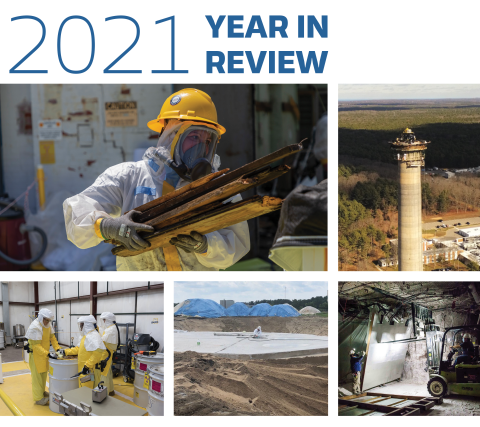Following several buried waste exhumation projects in the 1970s, the DOE Idaho National Laboratory (INL) Site tested technologies to allow for a larger waste retrieval effort and attempt to minimize the spread of contaminated soil.
Just months after the Experimental Breeder Reactor-I began generating electricity in December 1951 in a historic first, the Idaho National Laboratory (INL) Site opened its first waste repository on the 890-square-mile Atomic Energy Commission (AEC) site.
DOE EM and State of Idaho officials gathered at the Idaho National Laboratory (INL) Site to mark the completion of a high-priority cleanup project that helps protect the Snake River Plain Aquifer and maintains a commitment with the state of Idaho.
Federal and contractor leadership serving on a panel at the 2022 Waste Management Symposia last week discussed the progress of liquid waste treatment facilities at three EM sites as they work to meet cleanup commitments.
EM crews at the DOE Idaho National Laboratory Site recently retrieved the last of the Advanced Test Reactor’s spent nuclear fuel elements from a water-filled storage basin and transferred them to a nearby dry-storage facility.
Crews at the DOE INL Site are operating the final test run of the Integrated Waste Treatment Unit (IWTU), running waste simulant through the facility to ensure the plant’s performance and personnel proficiency for upcoming radiological operations.
EM is set to deactivate and demolish the prototype for a reactor plant used for the first nuclear-powered submarine, a major step toward advancing environmental cleanup at the DOE's Idaho National Laboratory (INL) Site.
The U.S. Department of Energy (DOE) Office of Environmental Management (EM) is set to deactivate and demolish the prototype for a reactor plant used for the first nuclear-powered submarine.
For more than 20 years, the Advanced Mixed Waste Treatment Project (AMWTP) at the DOE Idaho National Laboratory Site has sent shipments of defense transuranic (TRU) waste for disposal to EM’s Waste Isolation Pilot Plant in New Mexico.

The Office of Environmental Management leveraged the results of years of successful work in 2021 to launch a new era for the U.S. Department of Energy’s cleanup mission, all while continuing to manage the challenging conditions of the COVID-19 pandemic.

